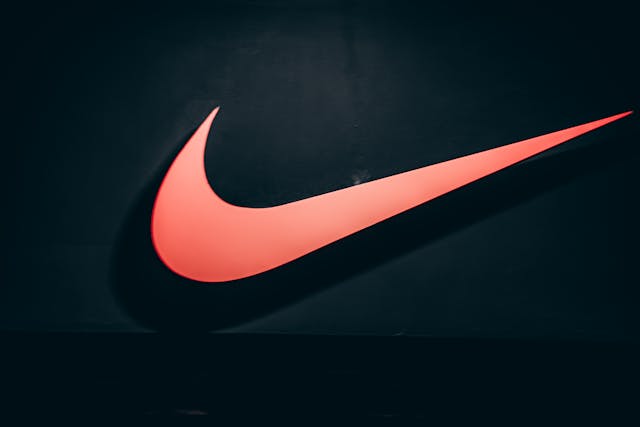Can You Trademark That Name? A Founder's Guide to Checking (and Why It's Crucial)
Your guide for Can You Trademark That Name? How to Check (and Why It Matters).

Can You Trademark That Name? A Founder's Guide to Checking (and Why It's Crucial)
Introduction: The Million-Dollar Question
Did you know that the median cost of defending a trademark infringement lawsuit can soar past $300,000, even before considering damages? For a new business, an unexpected legal battle over your name isn't just a distraction—it's an existential threat. The name you pour your heart, soul, and capital into could become your single greatest liability if it's already claimed.
Choosing a business name feels like a creative pursuit, a moment of inspiration. But in reality, it's one of the most critical legal and strategic decisions you'll make. A great name sets the stage for your brand's story, but a legally indefensible one can bring the curtain down before the show even starts. This is the world of business name protection, where creativity must meet due diligence.
This guide is your roadmap to navigating the complex but crucial process of trademark checking. We'll demystify brand name legal issues in simple terms, show you how to perform a trademark check for a business name, and highlight common naming mistakes that can cripple a company. By the end, you'll have a complete framework for choosing a name that's not just memorable, but defensible.
Ready to build a brand on a foundation of solid rock, not shifting sand? Let's begin. Create your own breakthrough name.
The Psychology of a Legally Strong Name
Before we dive into the legal mechanics, it's essential to understand the psychology behind names that are both effective and protectable. The goal is to find a name that is easy for customers to remember and hard for competitors to imitate. This balance hinges on a legal concept known as the "Spectrum of Distinctiveness."
In simple terms, the more unique and less descriptive your name is, the stronger your trademark rights will be. This is because trademark law aims to protect consumers from confusion, and descriptive names don't help consumers distinguish between competitors.
Here’s a breakdown of the spectrum, from strongest to weakest:
| Category | Description | Example(s) | Legal Strength |
|---|---|---|---|
| Fanciful | Invented words with no prior meaning. | Xerox, Kodak, Pepsi | Strongest |
| Arbitrary | Real words used in a meaningless context. | Apple (for computers), Amazon (for retail) | Very Strong |
| Suggestive | Hints at what the business does without describing it. | Netflix (flicks on the net), Microsoft (software for microcomputers) | Strong |
| Descriptive | Directly describes a product, service, or quality. | International Business Machines (IBM), The Weather Channel | Weak (Requires "secondary meaning") |
| Generic | The common name for the product or service itself. | "Clock" for a company that sells clocks. | No Protection |
As you can see, the names that feel the most creative and abstract are often the most powerful from a legal standpoint. A descriptive name like "Fast Web Hosting" is easy for customers to understand but incredibly difficult to trademark because you can't own common words that your competitors need to describe their own services. A fanciful name like "Kodak" had no meaning before it was created, giving it the highest level of legal protection from day one.
Proven Naming Strategies for Maximum Trademark Protection
Understanding the spectrum of distinctiveness directly informs your naming strategy. To build a defensible brand, you should aim for names that fall into the Fanciful, Arbitrary, or Suggestive categories. Here are a few proven strategies to generate legally robust names.
1. The Fanciful (Invented) Strategy
This involves creating a new word. It's the highest-risk, highest-reward strategy from a marketing perspective but the safest bet legally.
- Method: Combine word parts (morphemes), use foreign words, or simply invent a sound that feels right.
- Example: Google. Derived from "googol" (the number 1 followed by 100 zeros), it was unique and perfectly captured the company's mission to organize a vast amount of information.
2. The Arbitrary Strategy
This involves taking a real, common word and applying it to a product or service it has no logical connection with.
- Method: Brainstorm evocative words that align with the feeling or ethos of your brand, even if they don't describe the function.
- Example: Patagonia. The company doesn't operate in the region of Patagonia, but the name evokes ruggedness, adventure, and the outdoors—the core identity of its apparel brand.
3. The Suggestive Strategy
This is the artful middle ground. The name hints at the benefit or function without being plainly descriptive.
- Method: Think in metaphors and associations. What does your product feel like? What does it enable?
- Example: Pinterest. A clever combination of "pin" and "interest," it perfectly suggests the action of pinning things you're interested in without being as bland as "My Image Bookmarks."
Here's how these strategies stack up:
| Strategy | Trademark Strength | Marketing Effort | Domain Availability |
|---|---|---|---|
| Fanciful | Very High | High (must build meaning) | High |
| Arbitrary | High | Medium (must create connection) | Medium |
| Suggestive | Medium-High | Low (meaning is hinted) | Low |
| Descriptive | Very Low / None | Very Low (instantly understood) | Very Low |
5 Critical Naming Mistakes That Lead to Legal Nightmares
Many entrepreneurs make preventable naming mistakes that create serious brand name legal issues down the road. Here are five of the most common—and how to avoid them.
Mistake 1: The Descriptive Trap
Choosing a name that simply describes your service, like "Austin's Best Coffee" or "Affordable Logo Design."
- Why it's a mistake: These names are nearly impossible to trademark. You can't claim exclusive rights to words your competitors need to use. You'll also struggle to stand out in a crowded market.
- How to avoid it: Use the strategies above. If you were starting a coffee shop in Austin, a suggestive name like "Perk Up" or an arbitrary one like "Compass Coffee" would be far stronger.
Mistake 2: The "Sounds-Like" Blunder
Picking a name that is phonetically or conceptually similar to an existing, trademarked brand. Think "Face-book" or "Dripify."
- Why it's a mistake: This is the textbook definition of trademark infringement—creating a "likelihood of confusion." It's a guaranteed way to receive a cease-and-desist letter.
- How to avoid it: Perform a thorough trademark search that includes spelling variations, phonetic equivalents, and synonyms. This is where you must be brutally honest with yourself about whether your name is too close to a competitor's.
Mistake 3: The Global Myopia
Choosing a name without checking its meaning or connotations in other languages and cultures, or picking a name that's tied to a specific location.
- Why it's a mistake: A name like "Phoenix IT Solutions" instantly limits your perceived scope. Furthermore, a name might be harmless in English but offensive or nonsensical in another language, hindering future expansion.
- How to avoid it: Do a quick Google Translate check on your top name candidates in major global languages. Avoid specific geographic terms unless your business is intrinsically and permanently local.
Mistake 4: Forgetting the Digital Domain
Falling in love with a name before checking if the corresponding .com domain and key social media handles are available.
- Why it's a mistake: In 2024, your digital address is as important as your legal name. If the .com is taken by a major business, it's a huge red flag for potential trademark conflicts and customer confusion.
- How to avoid it: Make domain and social handle checks part of your initial brainstorming phase, not an afterthought.
Mistake 5: Confusing Business Registration with a Trademark
Thinking that because you've registered your name as an LLC or Corporation with the state, you "own" the name.
- Why it's a mistake: A state business registration is purely an administrative filing. It offers almost zero protection against another business in a different state (or even your own) using the same name. A federal trademark from the USPTO is what grants you exclusive rights to use a name nationwide in connection with your goods or services.
- How to avoid it: Understand the difference. Register your business, but then pursue a federal trademark for true business name protection.
The Complete Name Validation Framework: From Idea to Ironclad
Once you have a shortlist of names, it's time to put them through a rigorous validation process. Don't skip these steps.
Step 1: Automated Screening with Smart Tools
Before you invest hours in manual research, run your name ideas through an intelligent platform. This is the fastest way to weed out non-starters.
This is where tools like NameBot.ai are a game-changer. It integrates a preliminary trademark check for a business name directly into the creative process. As you generate ideas, the system automatically screens them against the USPTO database and checks for domain availability. This allows you to discard high-risk names immediately, focusing your energy only on viable candidates.
Step 2: The Deep Dive - Manual Trademark Search
Even with a great tool, a manual check is a prudent next step. The primary resource here is the USPTO's Trademark Electronic Search System (TESS).
- Go to the TESS Search Page: You'll find several options. Start with the "Basic Word Mark Search (New User)."
- Perform an Exact Match Search: Type in your exact name and see what comes up. Pay close attention to whether any "live" trademarks exist for similar goods or services.
- Search for Variations: Search for plurals, misspellings, and phonetic equivalents. If your name is "Synergy," search for "Sinergy" and "Synergee."
- Broaden Your Search: Look for names that might be "confusingly similar." If your name is "Bluebird Analytics," you should be wary if a company called "Bluejay Consulting" already exists in the same space.
- Check State and Common Law: Do a Google search for
"Your Name" + industry. See if other, non-trademarked businesses are using the name. Check your state's Secretary of State database as well.
Step 3: Market Testing (The 5x5 Method)
Legal availability isn't everything. The name also needs to work in the real world.
- The Method: Show your top 2-3 names to 5 people in your target audience for just 5 seconds. Then, hide the name and ask them:
- What do you remember?
- How do you spell it?
- What does it make you think of?
- Does it sound trustworthy?
This quick test reveals issues with memorability, spelling, and unintended negative associations.
Your Legal and Digital Fortress: Domain & Trademark Strategy
Your name's protection relies on two pillars: its digital presence (domain) and its legal status (trademark).
Domain Strategy
Your primary goal should be to secure the exact-match .com domain. It remains the gold standard for trust and authority.
- Tier 1 (Ideal): The available
YourName.com. - Tier 2 (Viable): If the .com is taken but parked (unused) or for sale, consider purchasing it. Use a domain broker for high-value names.
- Tier 3 (Alternative): If the .com is in use by a large company (especially in a similar field), this is a major red flag for your name choice. If it's in use by an unrelated entity, you might proceed by using a different top-level domain (TLD), like
.ai,.io, or.co. However, be aware that customers may still mistakenly go to the .com.
Here are some budget recommendations:
| Tier | Domain Investment | Strategy |
|---|---|---|
| Bootstrap | < $50 | Find an available .com or use a modern TLD like .io or .co. |
| Startup | $50 - $2,500 | Purchase a premium, brandable available domain or a reasonable aftermarket .com. |
| Scale-up | $2,500+ | Invest in a premium, one-word, or short .com domain via a broker. |
Trademark Strategy
This is where you formalize your ownership.
- Consult a Professional: While the initial search can be done yourself, the actual filing process is nuanced. A mistake can lead to rejection. Hiring a trademark attorney is a high-ROI investment.
- Choose Your Application: You can file on an "Intent-to-Use" basis before you launch, which reserves your rights, or on an "In-Use" basis if you're already operating.
- Be Patient: The USPTO review process can take 12-18 months. But once registered, your protection dates back to your filing date.
25 Data-Driven Business Name Ideas
To spark your creativity, here are some name ideas related to brand protection and legal tech, designed with the principles of distinctiveness in mind.
H3: For Legal Tech & IP Services
- LexiGuard: (Suggestive) Combines "Lex" (law) with "Guard," clearly suggesting legal protection.
- Markify: (Fanciful/Suggestive) A clean, modern verb-style name that implies the action of creating a mark.
- IP Sentry: (Suggestive) "Sentry" evokes a sense of constant, vigilant protection for intellectual property.
- BrandVigil: (Suggestive) "Vigil" means watchful, perfect for a brand monitoring service.
- Rightful: (Suggestive) A powerful, positive word implying ownership and legal correctness.
- Certiva: (Fanciful) Sounds like "certify" and "active," suggesting proactive legal certification.
- CogniLex: (Fanciful) Blends "Cognition" (knowledge) and "Lex" (law) for a smart, techy feel.
- PatentPath: (Suggestive) Clearly suggests guidance through the patenting process.
H3: For Brand Protection Agencies
- Fortress Mark: (Suggestive) A strong metaphor for impenetrable brand protection.
- ShieldRight: (Suggestive) Combines a metaphor (shield) with a positive outcome (right).
- Veritas Brand: (Arbitrary) "Veritas" is Latin for truth, lending an air of authority and authenticity.
- Aegis IP: (Arbitrary) The Aegis was the shield of Zeus, a powerful mythological reference.
- Nexus Protect: (Suggestive) "Nexus" means a central point, suggesting comprehensive protection.
- ClearMark: (Suggestive) Implies a trademark that is legally clear and registered.
- DomainClad: (Suggestive) "Clad" means clothed or protected, focusing on domain security.
H3: Creative & Catchy Names
- The Name Safe: (Metaphor) A simple, highly memorable metaphor for name security.
- Cease & Assist: (Playful) A clever twist on "Cease and Desist," reframing legal action as helpful.
- Brand Lode: (Metaphor) Like a "motherlode," suggesting a rich source of brand assets.
- ProofPoint: (Suggestive) A sharp, confident name implying solid legal proof.
- Tessera: (Arbitrary) A tessera is a small tile in a mosaic; suggests putting the pieces of a brand identity together.
- Sentinel Name: (Suggestive) A sentinel is a guard, conveying security.
- Charter: (Arbitrary) A charter is an official document; suggests official brand registration.
- AlphaMark: (Suggestive) Implies being the first and foremost mark.
- Keystone IP: (Metaphor) A keystone is the central stone that holds a structure together.
- TrueNorth Brand: (Metaphor) Suggests guidance and a clear, correct direction for a brand.
Conclusion: Your Name is Your Foundation
Your business name is more than a label. It's the cornerstone of your brand, the handle your customers will use, and a valuable piece of intellectual property. Choosing a name without performing a thorough trademark check is like building a house without surveying the land—you risk having to tear it all down.
The key takeaways are simple:
- Aim for Distinctiveness: Lean towards fanciful, arbitrary, or suggestive names for the strongest legal protection.
- Screen Early and Often: Use tools like NameBot.ai to integrate trademark and domain checks into your creative process from the very start.
- Validate Thoroughly: Don't skip the manual search, market testing, and domain checks.
- Invest in Legal Counsel: For the final filing, the expertise of a trademark attorney is invaluable.
By following this framework, you can move forward with confidence, knowing your chosen name is not just creative and compelling, but built to last.
Ready to find a name that's legally sound and set for success? Start generating and screening names with NameBot.ai today!
संबंधित पोस्ट



